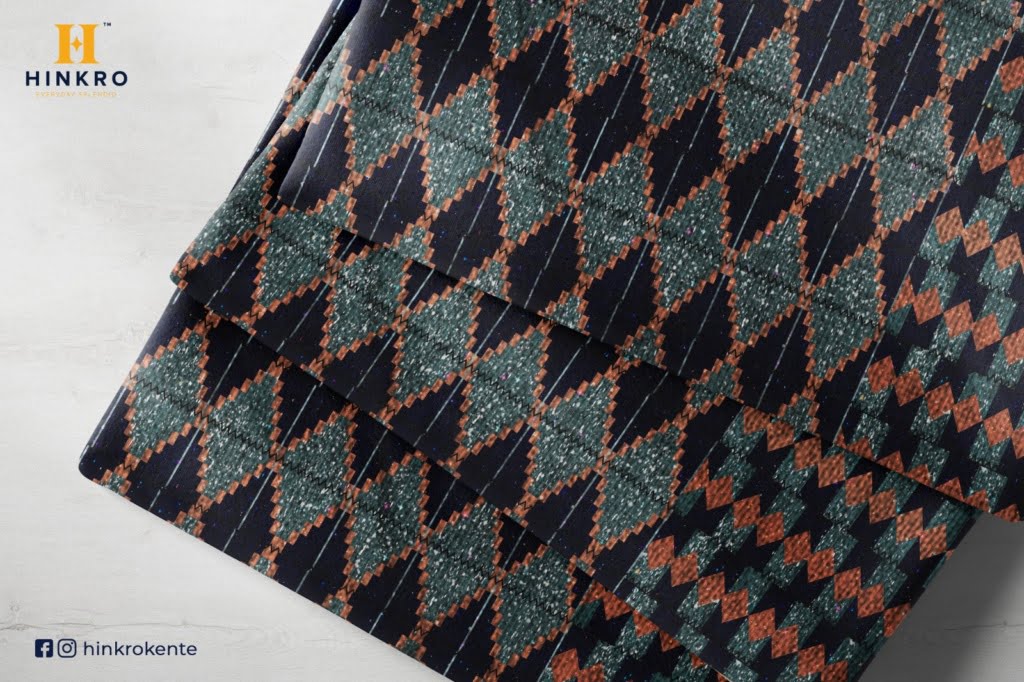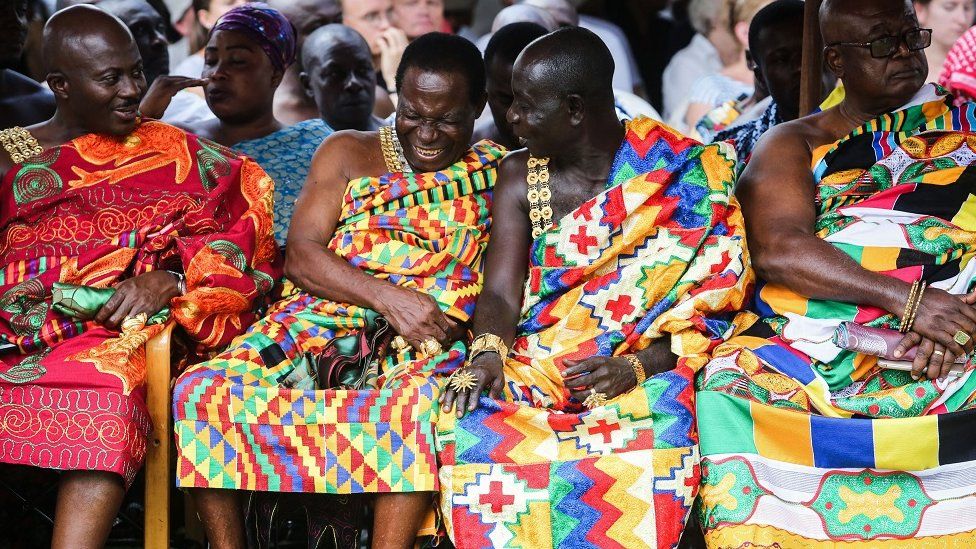© Hinkro Kente 2025. All right reserved. Terms and Privacy.
Built and managed by Nusite IT Consulting Limited

In the vast landscape of global fashion and cultural expression, certain textiles possess a unique ability to capture the essence of history, tradition, and identity. Among these, Kente cloth stands as an icon of African culture, a fabric that weaves together intricate artistry, vibrant symbolism, and a rich heritage. This article delves into the essence of Kente cloth, exploring its origins, symbolism, weaving techniques, and enduring significance.
Kente cloth finds its origins in West Africa, particularly among the Ashanti and Ewe peoples of Ghana, as well as the Akan people of Côte d’Ivoire. The name “Kente” is derived from the Akan word “kenten,” meaning “basket,” reflecting the fabric’s intricate weaving technique. Historically, Kente was reserved for royalty, worn during special occasions and ceremonies, and held deep cultural significance.
At the heart of Kente cloth lies its intricate weaving technique. Craftsmen skillfully interlace thin strips of cloth, which are often made from silk, cotton, or a blend of fibers. These strips, referred to as “warp” and “weft,” are combined to create larger pieces of fabric, resulting in a vibrant tapestry of colors and patterns. The weaving process is a laborious and intricate art, passed down through generations and embodying the craftsmanship and patience of the artisans.

What sets Kente cloth apart is its profound symbolism. Each pattern and color combination carries a specific meaning, communicating cultural stories, proverbs, and values. The colors are chosen meticulously, with each shade representing different aspects of life and culture. For example, gold symbolizes wealth and royalty, blue represents spirituality, and green signifies growth and renewal.
Patterns, known as “Adinkra,” hold even deeper significance. They embody a rich tapestry of messages, reflecting unity, strength, wisdom, and more. One of the most recognizable symbols is the “Sankofa,” a bird reaching back to retrieve an egg from its back, representing the importance of learning from the past to build a better future.

Kente cloth, once limited to ceremonial wear, has transcended its cultural boundaries. It has become a symbol of African identity and heritage, proudly worn by people across the globe. Modern fashion designers incorporate Kente patterns into contemporary clothing, creating a fusion of tradition and modernity.
However, alongside this broader recognition comes a responsibility to preserve the authenticity of Kente cloth. As its popularity increases, efforts are being made to ensure that the traditional weaving techniques and cultural significance are not diluted. This preservation is crucial to honoring the rich heritage that Kente represents.

Kente is not just a textile; it’s a living legacy of African culture and history. Its intricate patterns, vibrant colors, and profound symbolism tell stories that span generations. From its origins in West Africa to its current place in global fashion, Kente cloth remains a remarkable testament to human creativity, craftsmanship, and the enduring power of cultural heritage. As we appreciate its beauty, let us also remember the heritage it carries and the traditions it upholds.
